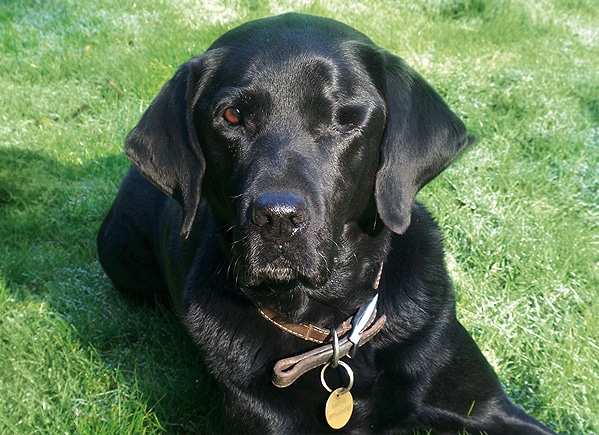
Enucleation is the operation performed to remove an eye.
Why does my dog or cat need an enucleation?
Enucleation is most commonly advised to relieve uncontrollable pain associated with an eye problem. The most common reasons for enucleation include glaucoma (increased pressure inside the eye), neoplasia (cancer inside or around the eye), severe trauma that cannot be repaired surgically, and severe infection/inflammation that cannot be managed with medication. In the case of a blind but comfortable eye, enucleation is usually not necessary. However, a blind and painful eye will distress your pet, and in the case of glaucoma the pain is often comparable to having a chronic migraine. Enucleation will alleviate this pain and is preferable to the long-term use of medication.
What does the operation involve?
The operation involves a general anaesthetic for your pet. The hair around the eye is clipped; the eye is completely removed and the eyelid skin is then stitched closed over the eye socket (the bony space within the skull that protects the eye). Stitches, which may require removal, may or may not be placed within the outer layers of the eyelid skin. The majority of pets will go home on the day of surgery, but if the surgery is performed in the afternoon or in the case of an older animal, it may be necessary to keep your pet in the hospital overnight.
What is the after-care?
Most animals are ‘back to their normal selves’ within five days. Your pet will have antibiotic and anti-inflammatory/pain killer tablets to take orally for several days after the surgery. Some pets will need to wear a plastic Buster collar for several days to prevent self-trauma to the surgical site. Occasionally, there may be a small trickle of pink fluid from the wound or from the nostril on the same side as the surgery; this is not a cause for concern and should resolve within two to three days. Your pet will need to see your own veterinary surgeon for a check-up approximately five days after the operation to make sure that the wound is healing well. If there are stitches which need removing, this is normally done by your own vet about 10 days after surgery.
Will there be any pain after the operation?
In most cases the eye is removed to control pain associated with an eye problem. Most animals are therefore more comfortable after the surgery and appear much happier within 24 hours. Your pet will receive painkillers before the surgery and this medication will be continued once your pet goes home. There is no pain associated with the surgical site in the long-term.
What will my pet look like?
Initially the skin around the operation site may be slightly swollen and bruised but this should resolve over a few days. The hair will grow back over several weeks. The skin over the surgical site will slowly start to sink in slightly as there is nothing in the eye socket to replace where the eye was. This ‘sinking in’ effect is less obvious in animals with long hair or dark coats than those with short hair and light coloured coats.

A Labrador one year after enucleation of the left eye
What happens to the eye after it is removed?
The eye may be sent to a pathologist for histology. This is similar to sending a lump for a biopsy and may be recommended in some cases to confirm the cause of the problem inside the eye. Pathology is important in almost all enucleated eyes to find out if there are any implications for your pet’s normal eye, as well as his or her general health. You and your vet will be informed of the pathology results, usually within three weeks of the operation.
If you have any queries or concerns, please do not hesitate to contact us.
Arranging a referral for your pet
If you would like to refer your pet to see one of our Specialists please visit our Arranging a Referral page.